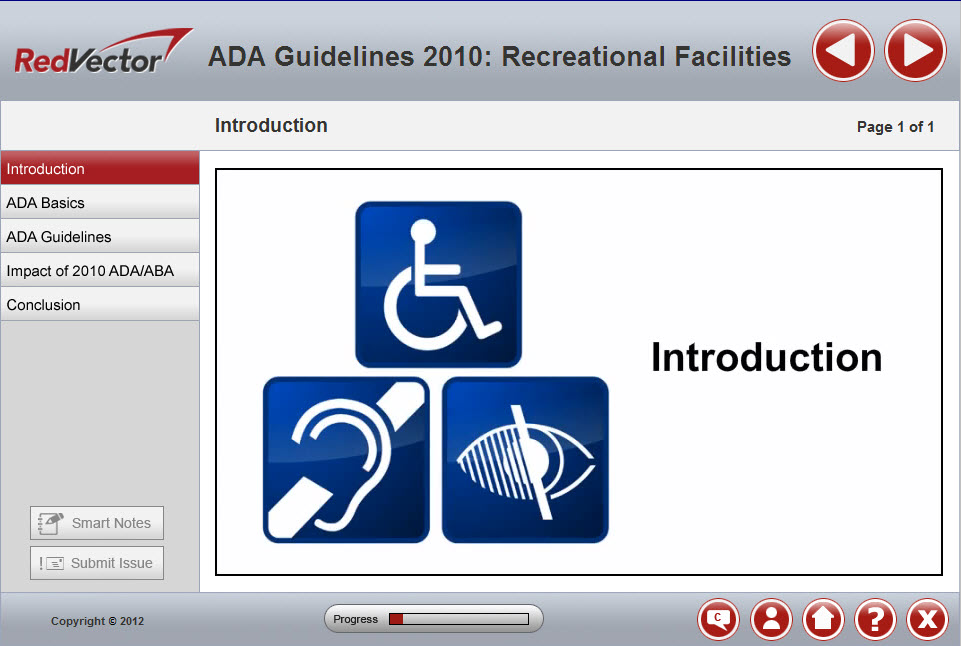
ADA Guidelines 2010: Recreational Facilities
The Americans with Disabilities Act/Architectural Barriers Act Accessibility Guidelines (2010 Guidelines) developed by the U.S. Architectural and Transportation Barriers Compliance Board (the Access Board) effectively replaces the 1991 ADA Accessibility Guidelines (ADAAG) and the Uniform Federal Accessibility Standards (UFAS). The Recreation Facilities section (Chapter 10) of the 2010 ADA Standards for Accessible Design focus on ADA requirements for accessibility on newly designed or newly constructed and altered amusement rides. An “amusement ride” is defined by the guidelines as a system that moves people through a fixed course within a defined area for the purpose of amusement. ADAAG addresses only the built environment (structures and grounds). This interactive online course provides criteria for basic elements within the “Recreational Facilities” of accessibility as established by the guidelines, including:
- 1001 General
- 1002 Amusement rides
- 1003 Boating facilities
- 1004 Fishing piers and platforms
- 1005 Miniature golf courses
- 1006 Golf courses
- 1007 Exercise equipment
- 1008 Bowling lanes
- 1009 Shooting facilities
- 1010 Swimming pools, wading pools, and spas
ATTN: The content in this course generally addresses requirements from the American with Disabilities Act (ADA) that is adopted with amendments in the 2015 Minnesota State Building Code in Minnesota Rules Chapter 1341. For specific requirements in the 2015 Minnesota Accessibility Code, please reference the following link: https://codes.iccsafe.org/content/MAC2015/toc
Request a demoCourse Details
Learning Objectives
At completion of this course, you will be able to:
- List the different types of physical and mental disabilities as covered by ADA
- Recognize the revised regulations for Title II and Title III, the organization of the new design standards, and the standard’s intent to improve access and compliance
- Discuss the changes made to the Chapter 10 Recreation Facilities by the enactment of the 2010 ADA Standards for Accessible Design
- Describe the timeline for compliance with the 2010 ADA Standards for Accessible Design
- Explain the importance of compliance with the ADA
- Identify who must comply with accessible laws and standards
Specs
| Course Level | Intermediate |
| Languages | English |
| Compatibility | Audio, MobileReady |
Demos + Pricing
Learn more about our courses, get pricing, and see our platform.











